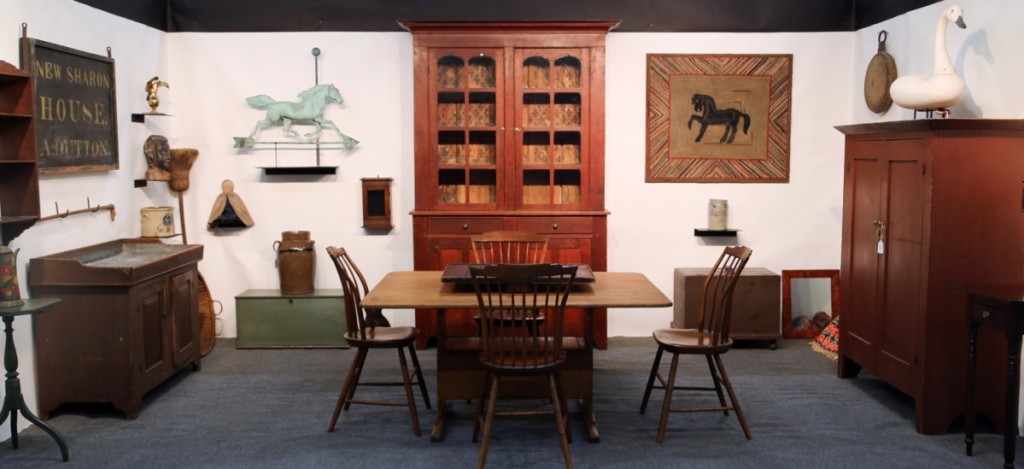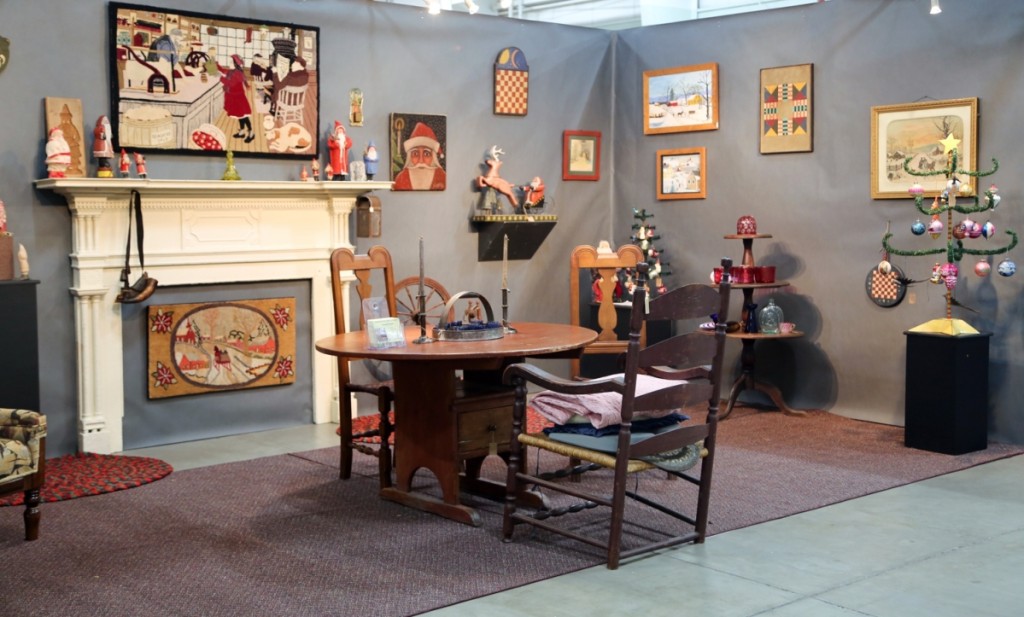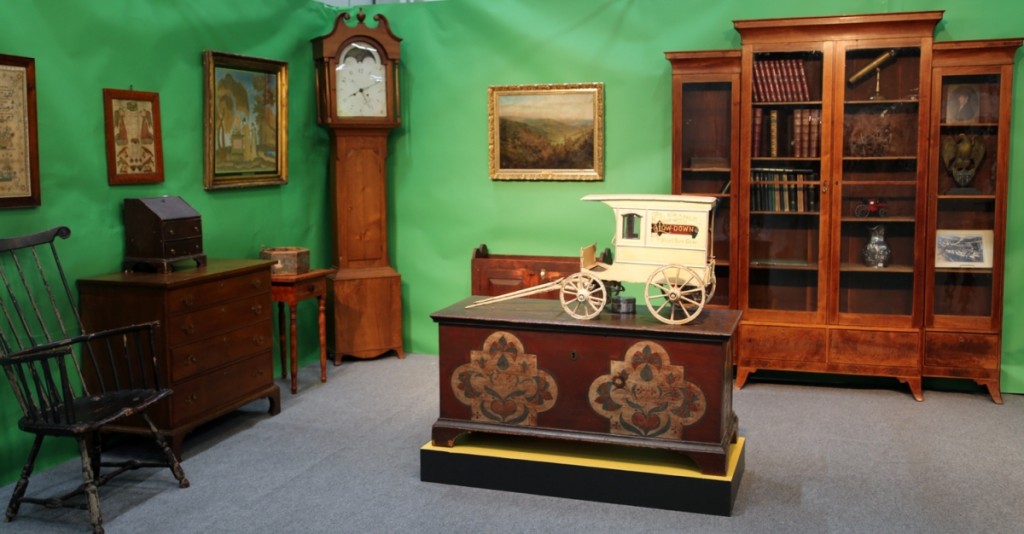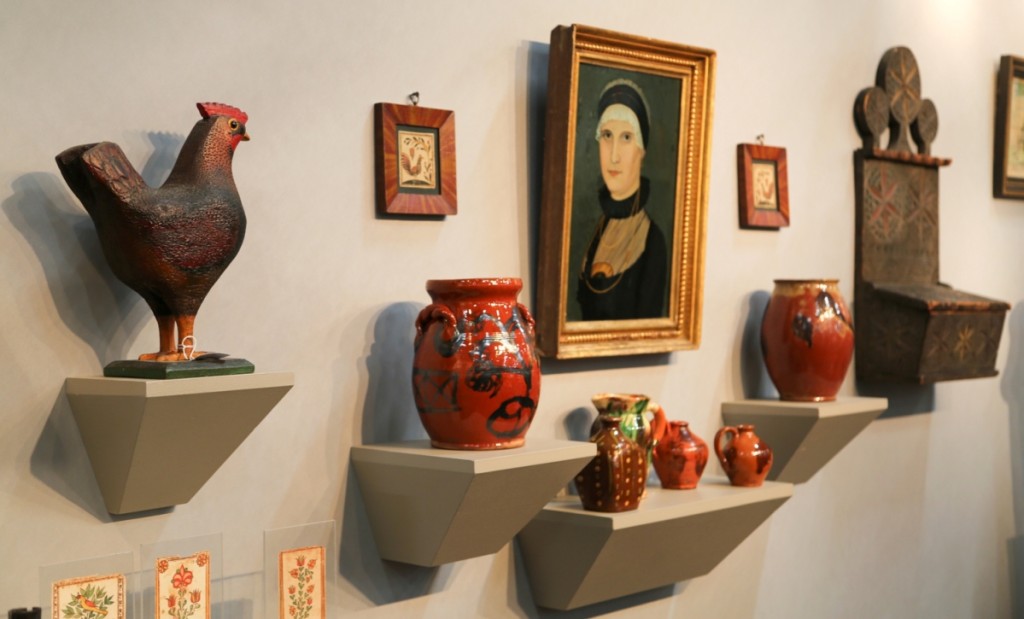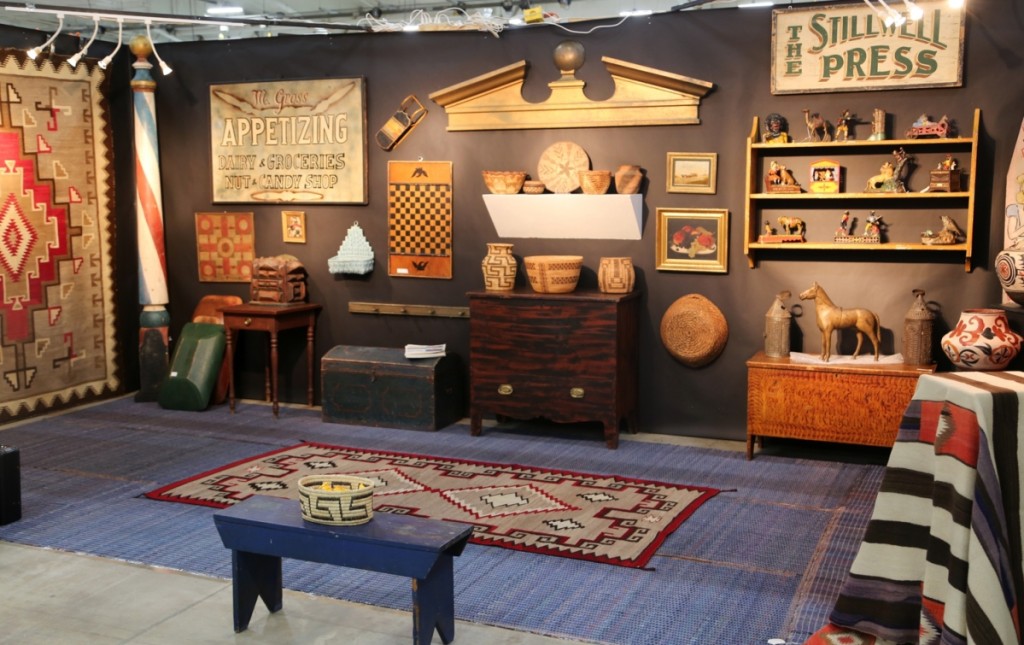Review and Photos by Greg Smith
YORK, PENN. – Bob Bockius was enthusiastic ahead of the opening for his twice annual Greater York Antiques Show, which found its home, as always, at the York Fairgrounds November 3-4. The show saw just over 30 dealers attend and regale visitors with a deep assortment of Americana, historical paintings, Oriental carpets, folk art, early American furniture, American Indian material, toys, textiles, early lighting, American pottery, jewelry, firearms and more.
The show moved a few hundred yards across the York Fairgrounds, setting up inside the Utz Arena from its previous home at Memorial Hall East. The new venue has its gives and takes, notably providing more square footage than Memorial Hall East, but coming with a caveat well-known to those who have traveled the long country roads of the area: the smell of livestock lingers in the air, unlike the other building. But you get used to it.
“I’m always excited about every show,” said Bockius. “We have a great group of dealers who bring a good mix of personality. I’ve seen some good merchandise on the floor.”
As the booths began to fall into place and the moving boxes cleared out, the blankets and ladders and drills hauled back out to their home in the Sprinters, one thing was certain: dealers were enthusiastic to be back in York to feed the hungry and knowledgeable crowds that travel from throughout the Northeast, the Mid-Atlantic and the eastern Midwest.
Steve White of White & White Antiques, Skaneateles, N.Y., was excited to show a pair of folk art portraits that took side stage along the dealer’s right wall. “A lady brought them in the other day, the family lives in Newark, N.Y.,” he said. “She gave me reams of information about the sitters, but the painter is unknown.” The sitters, James P. and Louise B. Bartle, sat in traditional white and black garb against a dark background. Together, the sitters formed an interesting duo, a ying and a yang. While James sat with a boyish smirk on his face, Louise appeared opposite with a mean countenance through a cold stare and a near-snarl from her mouth. Still, the pair was reasonably priced, and White was enthusiastic about them. “They need some restoration, but they’re good enough to hang up and have fun.”
A gilt-bronze-brass alloy pediment from the 1920s hung at center in the booth of Lancaster, Penn., dealer Steve Smoot Antiques & Navajo Textiles. The dealer featured an array of Americana and Native American material alongside each other. Hanging from his side wall was a collection of Navajo rugs, most from 1880-90, including a large transitional and a third phase variation from 1910. Along the back wall was a tramp art box that stood about 20 inches high. “It’s a very underappreciated piece of tramp art, very highly developed and polychromed,” said Smoot. “It was probably a presentation piece or a jewelry box.” Indeed the box featured anywhere from seven to 14 layers in some places, with high relief and solid construction beneath a nearly untouched layer of paint.
Greg Kramer seemed to be a beneficiary of the new layout, with what seemed like considerably more space than he was afforded at Memorial Hall East. When I asked whether he had to clear out the shop to fill it, Kramer laughed and said, “This doesn’t even take care of the barn.”
At the center of Kramer’s booth was a paint decorated, marbleized counter with a 3-foot Santa Claus figure atop. “That’s the best paint decorated counter we’ve ever had,” said Kramer. His inventory also included a set of burgundy paint decorated dining chairs from York County, Penn., a child’s toy buggy made from mold patterns and a paint decorated box featuring a pair of exotic birds on its front, dating to the Nineteenth Century.
An 1820s four-door Hepplewhite bookcase from the Mid-Atlantic states was in the booth of Kelly Kinzle, New Oxford, Penn. The piece featured four drawers under four glass doors, in a lively walnut with traditional inlay. Kelly noted that it was a rare form, not having seen many others during his career. Also in his booth was a Lehigh Valley paint decorated chest in a deep red paint with two matching central decorations to the front. “No one knows who did this,” said Kelly. “I’ve had other examples by the same maker. He mostly painted urns, but this one has hearts on it, which is unusual.”
Michael Weinberg from West Pelham Antiques, Pelham, Mass., was particularly excited about a circa 1820 English woolie featuring a shipwreck scene that hung on the back wall of his booth. The needlework piece was notable in that it featured a single black man among an all-white crew of survivors from a ship that washed ashore. A nod, Weinberg surmised, to Théodore Géricault’s “The Raft of the Medusa,” which was on display in London around the time when the woolie was believed to have been made.
A selection of watercolors was on show in the booth of Diane Farr Antiques, Boalsburg, Penn. Counting among them was a fraktur birth record by the Virginia record book artist. The fraktur featured lively decoration in red, yellow, green and blue for the birth of Mary Magdalene Berkheimer, dated 1804. It was in good company, as proved by three nearby Nineteenth Century watercolor portraits featuring, individually, side profiles of a man and two women. The portraits were labeled “Messrs. R. & W. Kerry, Artists” and dated to 1847. Two examples by the same artists were featured in the Karolik collection of American watercolors at the Museum of Fine Arts, Boston.
Christmas was alive in the booth of Axtell Antiques, Deposit, N.Y. The dealer brought everything a person could want to celebrate the holiday, from the fireplace hearth to a selection of Santa Claus figures, folk art snow scene paintings, ornaments and a hooked rug featuring a girl buying a gift at her local general store.
All in all, the new setting changed almost nothing about Bob Bockius’s show. Even with a few dealers opting out this edition, the event still attracts a good lineup of quality merchandise on offer.
For additional information, www.mitchelldisplays.com or 856-686-9000.

